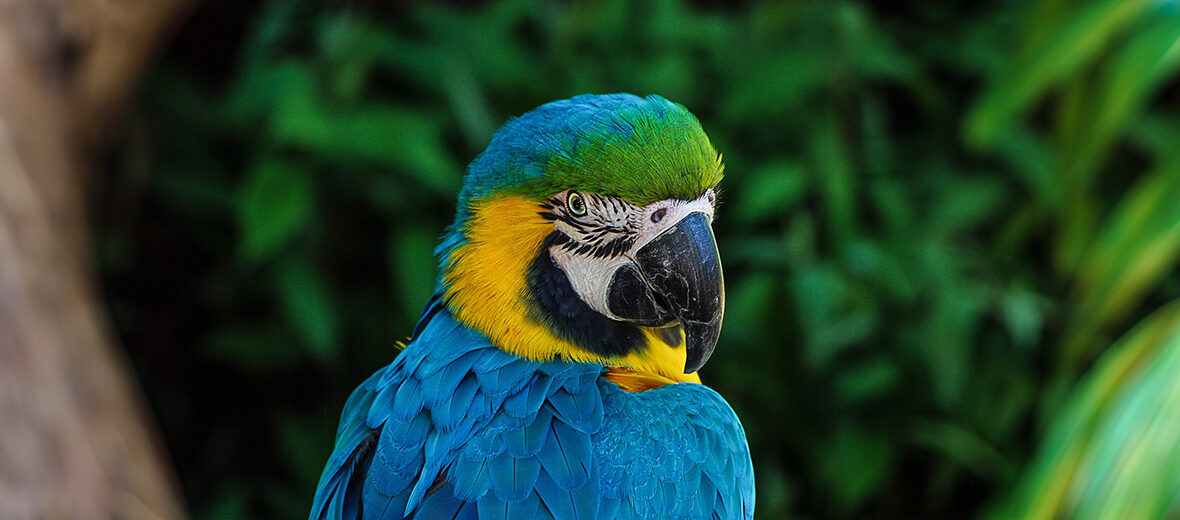
The blue-and-yellow macaw, aka blue-and-gold macaw, is a larger Neotropical parrot. They prefer forest habitats – primarily varzea (seasonal floodplain forest inundated by whitewater rivers), open areas of terra firme (unflooded forest), woodlands, and savannahs. These birds have been heavily traded since 1981, when they were listed on CITES Appendix II. They also face the threat of habitat loss and destruction. Even though their population trend is decreasing, they are still abundant enough to be listed as Least Concern by the IUCN.
First the Stats…
Scientific name: Ara ararauna
Weight: Up to 3.3 lbs.
Length: Up to 3 feet
Wingspan: Up to 45 inches
Lifespan: Up to 100 years
Now on to the Facts!
1.) These birds can be found in Central America & South America, as well as on the island of Trinidad in the Caribbean.
2.) They are the most popular and commonly kept species of macaw in captivity worldwide as both a pet and a companion parrot, and they are also the least expensive of the large macaw species.
3.) Blue-and-yellow macaws were originally described by Swedish naturalist and historian Carl Linnaeus in 1758.
4.) These macaws are now 1 of the 8 extant species within the Ara genus, that were first proposed in 1799 by the French naturalist Bernard Germain de Lacépède.
5.) The genus name is from ará and means “macaw” in the Tupi language of Brazil, and is based on the sound of their call.
But wait, there’s more on the blue-and-yellow macaw!
6.) Their powerful beaks are used not only for breaking nutshells, but also for climbing up and hanging from trees.
7.) Nuts, seeds, fruits, vegetable matter, bark, leaves, insects, snails, and even small animals are all on the menu.
Did you know…?
55,531 wild-caught individuals have been recorded in international trade in 2005. But many more have likely been taken from their forest home that weren’t recorded.
8.) Even though they were nearly completely wiped out in Trinidad due to human activity in the 1970s, a recent reintroduction program has proved very successful.
9.) Blue-and-yellow macaws are monogamous (mate for life).
10.) Their nests are constructed almost exclusively in dead palms and a predominant amount of nests are found in Mauritia flexuosa palms.
But wait, there’s still more on the blue-and-yellow macaw!
11.) Females lay up to 3 eggs that hatch in up to 28 days.
12.) Typically, 1 chick becomes dominant and gets most of the food while the others die in the nest.
13.) The remaining chick fledges in up to 97 days.
14.) In captivity, even well-tended to macaws are known to “scream” to get their caregiver’s attention, and they also make other loud noises. Loud vocalizations, especially “flock calls”, as well as destructive chewing are all natural parts of their behavior and should be expected while in human care.
Now a Short Blue-and-Yellow Macaw Video!
Be sure to share & comment below! Also, check out the Critter Science YouTube channel. Videos added regularly!
Want to suggest a critter for me to write about? Let me know here.
Some source material acquired from: Wikipedia & IUCN



